An Indo-Korean supper club, the first of its kind: Part 2 of Rice in London
In the final article on my two-part series on rice, I recount how my friend Rebecca and I organised our very first Indo-Korean supper club, with a recipe for kimchi biryani at the end.
I met Rebecca Ghim in July 2022 at London Food Link’s summer party for local, sustainable food businesses trying to create a positive impact in the city’s food supply chain. Rebecca was representing her business, The Ferm, as its CEO and founder to share how she makes zero-waste, artisan and plant-based kimchi. While I was representing my former employer to foster relations with local London businesses for future collaborations. I didn’t know then that I indeed would find a collaborator at that party, someone with whom I could tick off a dream that I’d held on to in the back of my mind for a long time. Rebecca and I instantly bonded over food, its impending decolonisation and of course, rice. That seed germinated into the supper club that we would plan almost a year and a half later.
Our passion for conversations on food can be best represented by popcorn – we start off with pistons firing as a couple of kernels pop and then the sheer enthusiasm and excitement doubles with intensity as the puffed-up kernels now explode all over the place, filling us up with happiness as overflowing as melted butter. We’ve also bonded over the fact that on days that we don’t eat rice, we feel like we’ve not had a full, satisfying meal. Almost as if a non-rice meal is a phantom meal and the presence of rice makes it real. The only time we did not complain about the absence of rice during a meal was when we went to e5 Bakehouse in East London for a supper club created around wheat and ancient grains. As novice supper club goers, we didn’t know what to expect and the three-course meal that was in store for us blew our socks off. e5 Bakehouse have their own farm which supplies all the wheat for their kitchens to bake some of London’s best sourdough bread and we scarfed down a delicious, gluten-heavy meal with content sighs and buzzing ideas.
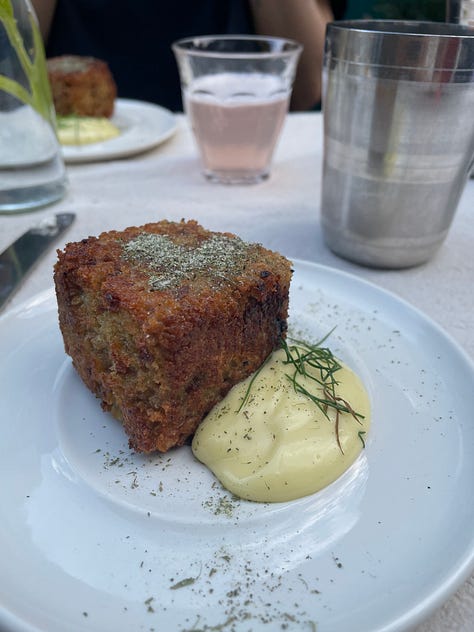

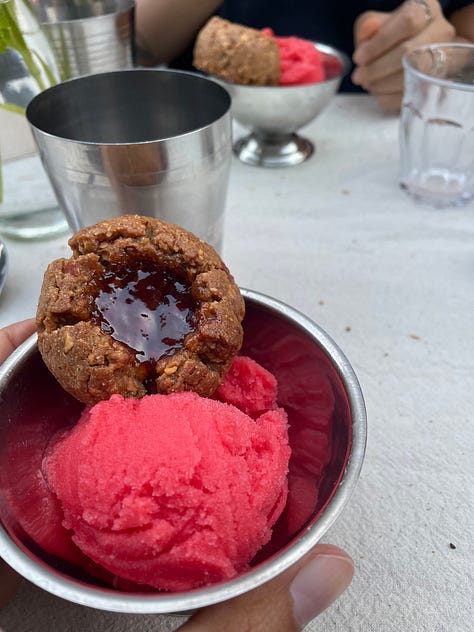
The first idea we had was in jest, what if we found a way to infuse the flavours of tikka masala to the starchy, chewy and delicious Korean rice cakes called ddeokbokki? The potential marrying of spicy and umami notes of gochujang with tikka masala worked in our heads and we agreed at e5 Bakehouse that this idea had to jump from paper to plate. Ultimately, we firmed our resolve to finally make tikka masala ddeokbokki after a few months as my decision to leave London solidified. Rebecca gave me the best present two food friends can give to each other: what if we planned a whole Indo-Korean menu and organised a supper club for our friends featuring the fusion ddeokbokki and so much more? The idea was too precious to both of us to not let it turn into a reality, so we decided we needed to go all out with this menu. Tikka masala ddeokbokki had taken its place as the spicy, moreish appetiser to kick off our supper club. Rebecca and I knew that the mains had to involve rice somehow. As I was listing off rice dishes that I can cook in my sleep, Rebecca stops me at biryani and looks at me with wide eyes and says, ‘What if we add kimchi to it?’
That was our mad scientist moment. Could kimchi biryani work? Can basmati rice shine in the presence of the sour and sharp kimchi? The originality of Rebecca’s suggestion was largely unexplored and we took to a metaphorical drawing board like the guys in Ocean’s 11, 12 and 13 and basically formulated ways to incorporate the flavours of two incredibly strong dishes in a way that won’t overpower either. The answer was so simple it was staring us in the face in both of our fridge shelves: leftover kimchi juice. Rebecca floated the idea of cooking basmati rice in kimchi juice which would be the only kimchi element in the dish and I would cook the gravy as per usual, using my mum’s recipe. We decided to make kimchi biryani one day before the supper club and we had no way of truly knowing until then whether this would work out.
Reader, it was the most beautiful mash-up of two of our favourite things and safe to say that it was also a huge success. The kimchi juice added tartness and a zing to the basmati rice and somehow was just the right amount so as to not take over its floral taste and scent. It was almost as if basmati rice in kimchi juice had an extra bite to it, the kind you get when you squeeze lemon on beans and rice. If kimchi and basmati had taken to each other like I have taken to k-dramas (and I am straight up obsessed with them), then all that was left to make this couple a saucy love triangle was to combine the kimchi rice with the biryani gravy. The result was spectacular, the kimchi rice blended in with the onion-tomato-garlic rich gravy that was chock full of whole spices like black peppercorns, black and green cardamom, bay leaves, star anise, cloves and cinnamon. I had used a biryani masala to spice the gravy that was kindly gifted to me by MasterChef India contestant and custodian of Sindhi cuisine, Deepa Chauhan on the beautiful summer’s day that we met in London and I think this masala was the key to making our kimchi biryani work.
In my packing frenzy, all I had left in my pantry was memoni mutton (goat meat) biryani masala. Memoni refers to a group of people from the peninsular region of Gujurat, a state in West India. The language spoken by Memonis, also called memoni, is a mixture of Sindhi and some other Gujarati dialects. Serendipitously, the memoni biryani masala was the closest addition of Sindh into this Indo-Korean boiling pot. It is also worth noting that this spice mix doesn’t contain any traces of goat meat making it suitable for vegans to consume. The reason this spice mix worked in our favour is because memonis add pawpaw or papaya powder to their biryani spice mix. While it contains the regular ingredients like ginger, garlic powder, onion powder and whole spices, it is this sour element of papaya powder that makes it more sour than my regular biryani masala. In one bite, you can taste the tartness of the kimchi, the individual grains of basmati rice and the sourness of the onion-rich gravy. Rebecca and I danced around my kitchen to celebrate this beautiful union of flavour palates.
When it came to preparing our appetiser on the day of the supper club on 24th October 2023, we simply cooked ddeokbokki the traditional way (while keeping it vegan-friendly) with heaps and heaps of gochujang that Rebecca had fermented herself over two years. It wasn’t until the rice cakes were plump, silky and slick with the gochujang sauce base that we added a couple of teaspoons of tikka masala. The result was indeed as we had predicted, the tikka masala lifted the spiciness from the gochujang while highlighting its deep savoury notes. Next, we moved on to preparing our sides: gochujang raita and blanched beansprouts. Raita is a spiced yogurt dip that always accompanies any good biryani and ours had a smattering of gochujang in it, topped off with a handful of spring onions. The blanched beansprouts mixed with sesame oil and minced garlic represented a staple side dish at Korean dinner tables and provided some textural crunch to the mains.
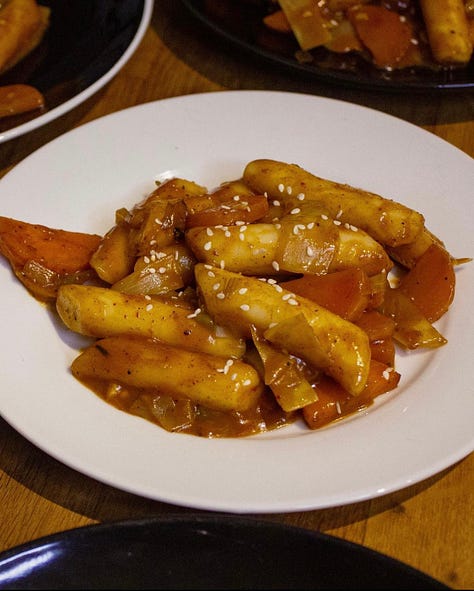
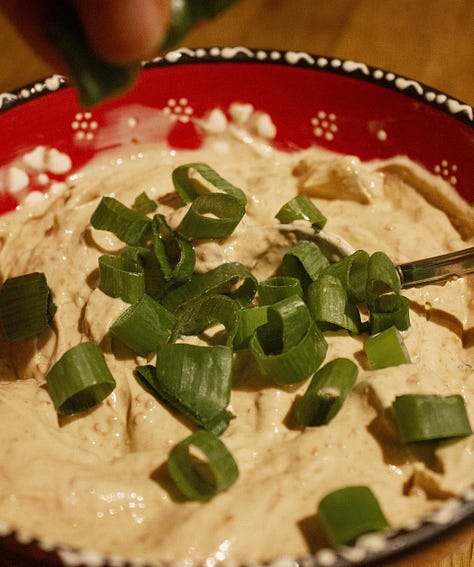

Our dessert was the only non-rice dish in our supper club menu but nonetheless an infusion of two key Indian and Korean flavours: saffron and sesame. We decided to prepare a traditional Indian sweet semolina pudding which would be flavoured with saffron and sesame. We were very conscious of balancing two flavours that can easily turn bitter if added in excess and the result was a balanced flavour profile that evoked the floral notes of saffron along with the earthiness of sesame. A surprising match made in heaven.
Our friends left my apartment with Tupperwares, full bellies and rice-induced sleepiness which in both of our books marked this endeavour as a huge success. We had found fan favourites in tikka masala ddeokbokki, kimchi biryani and gochujang raita. While we certainly did feel the pressure of making sure the food, ambience and setting of our supper club were perfect, we also experienced an overwhelming sense of joy and accomplishment that only confirmed to both of us that many more supper clubs lay in our futures.
Here are some links if you’d like to be as invested in our first supper club as we are:
• Watch the behind the scenes video of us making the kimchi biryani
• Listen to our carefully curated Spotify playlist of Bollywood and K-pop bops
• Check out more information on The Ferm
And finally, here’s our recipe for kimchi biryani!
Ingredients: (for 8–10 people)
500g of basmati rice, washed and soaked
800 ml of kimchi juice, can be strained from two jars of kimchi
200g of French beans, diced
200g of carrots, diced
3–5 garlic pods, minced
Half an inch of ginger, minced
8 medium or 10 small red onions, finely chopped
1 can of tinned tomatoes
Vegan butter, to cook the gravy (ghee can be used if you’re not vegan)
Vegan yogurt
3 black cardamoms
5 green cardamoms (make it 6 if there are no black cardamoms available)
7–8 black peppercorns
4 cloves
1 star anise
2 bay leaves
1 cinnamon bark
2 dried red chillies
2 tablespoons of Shan’s memoni mutton biryani masala or any other biryani masala that is readily available
½ tsp of garam masala
Salt to taste
Instructions:
• Soak around 500g of basmati in water and cook it in 800ml of kimchi juice.
• Cook roughly diced green beans and carrots in vegan butter and set them aside.
• Cook finely diced ginger, garlic, and red onions in two tablespoons of vegan butter.
• Add in one can of tomatoes, three black cardamoms, seven to eight black peppercorns, four cloves, one star anise, two bay leaves, five green cardamoms, one cinnamon bark, two dried red chilies, and two tablespoons of Shan memoni mutton biryani masala (which is vegan).
• Add the vegetables, six tablespoons of vegan yogurt, and a pinch of garam masala to the mix.
• Layer the gravy with the rice, starting with one ladleful of the gravy and then rice. Next, cover the rice in gravy so that the gravy forms a layer of its own. Continue until both rice and gravy are used up and make sure the last layer is rice. My mum adds saffron milk and mint chutney in between the layers too but given that this biryani’s flavour profile is more sour and umami, we decided to omit adding saffron milk and mint chutney.
• Leave overnight and heat it up before serving with raita and any other condiments of your choice.

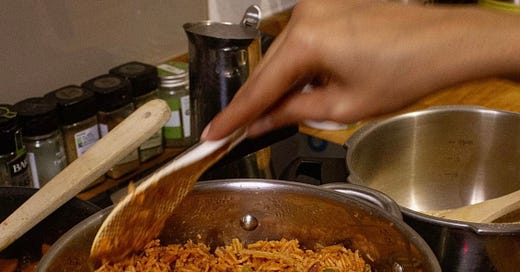



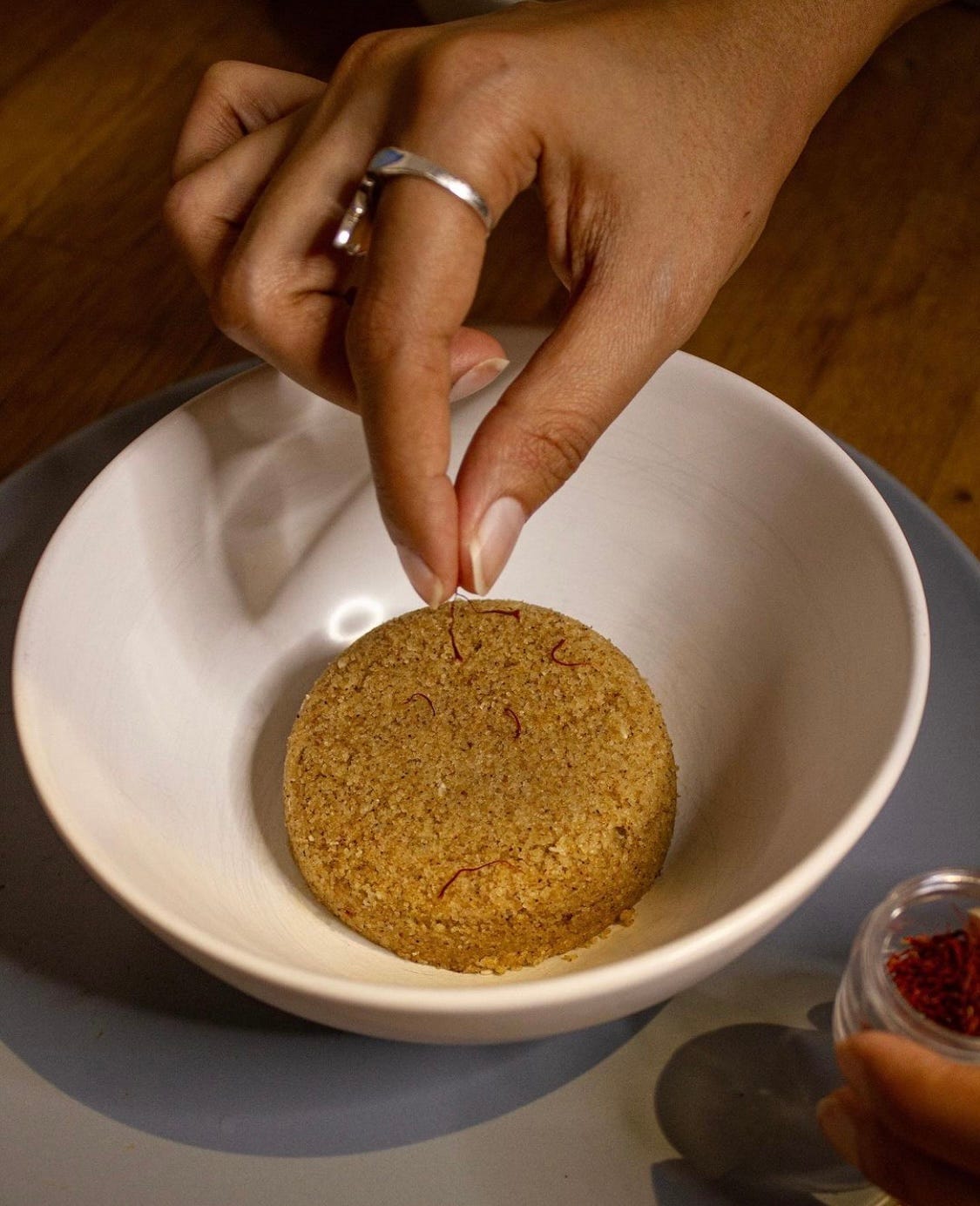
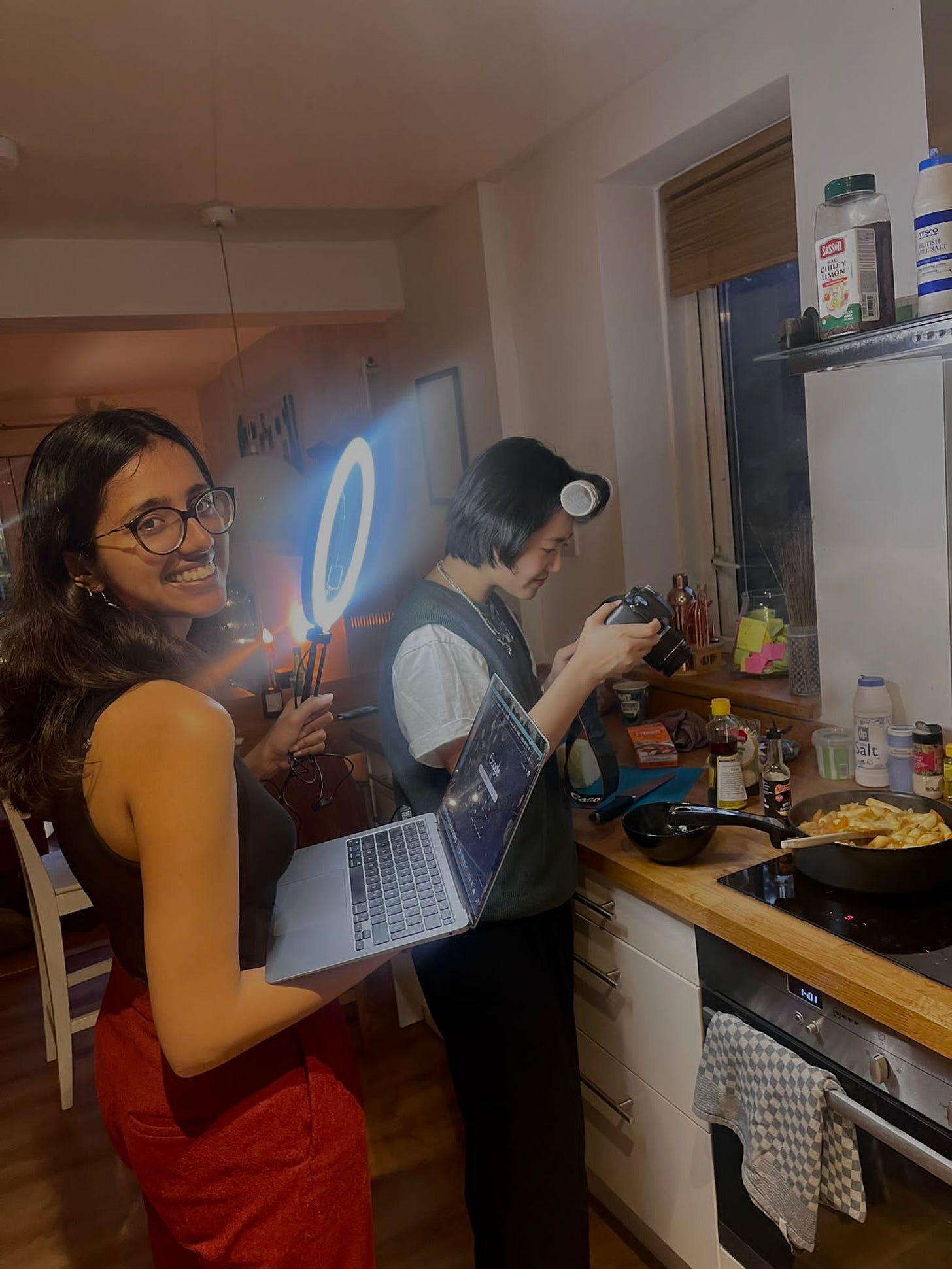
This sounds like a crazy amazing meal! So glad to see the masala was deployed in such an unusual manner and stoked it worked out well. Guess who is trying the gochujang raita soon 😍
enjoyed reading this , could feel the excitement through words . Very beautifully penned.
P.S. must try .. will try … kimchi biryani .